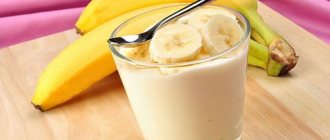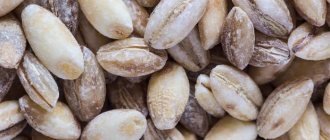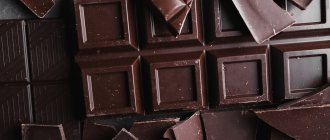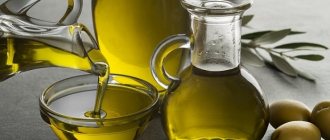A little history
The Snickers brand is owned by chocolate giant Mars Incorporated, which was founded in 1911 by entrepreneur Frank Clarence Mars. The confectioner constantly experimented with new types of products, trying to beat his numerous competitors. “Snickers” can easily be considered one of his most successful inventions.
The bar received its unusual name, translated as “neighing” or “snorting”, after the beloved horse of the Mars family, which died shortly before the start of mass production of the candy.
This is interesting: in the British Isles the product was originally sold under the Marathon brand, since snickers are a popular model of sneakers among the British, and there could be confusion in the concepts. However, in 1990, Mars Incorporated management decided to eliminate these differences and sell the bar under a single name throughout the world.
Russia became acquainted with the iconic Western product in 1992.
Advertising companies played a major role in the promotion of peanut sweetness, where it was positioned as an “energy recharge” for people engaged in active mental or physical activity. This approach served to justify the high calorie content of the dessert and attracted the attention of consumers to it.
Everything you need to know about Snickers
By receiving complete information about a product, it is much easier to decide whether it is worth introducing it into your menu and how best to do it. Then, in pursuit of gastronomic pleasures, you will not have to lose your health, paying for your own promiscuity.
Composition of chocolate
The modern range of popular bars is surprisingly diverse. The brand periodically tests new fillers and toppings to better satisfy consumer demand. However, the classic composition of the Snickers bar remains unchanged since the release of the first batch.
Filling:
- whole roasted peanuts;
- layer of nougat;
- caramel.
Coating:
- milk chocolate.
Like other products intended for long-term storage, sweet snacks are not without preservatives and stabilizers, although they are not indicated on the packaging. Also among the minor ingredients you can find: milk fat, hydrogenated palm oil, emulsifier - soy lecithin (E 467), calcium carbonate dye (E 170), artificial flavor "vanillin".
Instead of peanuts, some types of bars add:
- hazelnut;
- almond;
- sunflower seeds;
- peanut butter.
And the milk chocolate used for glaze is replaced with white in the Mars Snickers White series.
Calorie content
100 g of chocolate contains 513 kcal - this is approximately 1/5 of the daily requirement. Knowing the weight of a particular type of treat, it is not difficult to calculate how much it will cost the body.
Nutritional value of a standard bar:
- fats – 28 g (including 0.4 g trans fats);
- carbohydrates – 63 g;
- proteins – 9 g.
Weight
Trying to reduce the calorie content of its products, Mars Incorporated periodically slightly “cuts” it, while leaving the cost unchanged.
In 2004, as part of the British program to improve the nation's health, the large 95-gram Snickers Super chocolate bar was divided into 2 smaller sizes and began to be sold under the name “Duo”. The manufacturer clarified that now you can not eat the treat right away, but “stretch it” or share half with a friend. Such a step can only be taken by people with a will of steel, but the company is not responsible for this.
In 2009, in the United Kingdom, a 62.5-gram candy was reduced to 58. And in 2013 by another 7%. The UK version of the Snickers bar now weighs 48g.
The sweets produced by the Russian branch of Mars are somewhat different from foreign standards. From the table you can find out how many grams are in different types of Snickers that are offered on the domestic market.
| № | Product name | Weight (g) / quantity per package (pcs.) |
| 1. | Standard Snickers bar | 50,5/1 |
| 2. | Big Snickers Super | 47,5/2 |
| 3. | With hazelnut | 40,5/2 |
| 4. | With seeds | 43.5/2 or 55/1 |
| 5. | With almonds | 40,5/2 |
| 6. | Snickers Super +1 | 37,5/3 |
| 7. | Small Snickers Mini | 15/12 |
| 8. | Protein | 51/1 |
| 9. | Espresso | 51,5/ 1 |
| 10. | Stick | 25/1 |
| 11. | Snickers x3 | 47,5/3 |
There is also ice cream of the same brand in a cup of 375 g and a cone - 70 g.
Calorie content of Snickers minis chocolate bar = 15g. Chemical composition and nutritional value.
Nutritional value and chemical composition of “Snickers minis chocolate bar = 15g.”
The table shows the nutritional content (calories, proteins, fats, carbohydrates, vitamins and minerals) per 100 grams of edible portion.
| Nutrient | Quantity | Norm** | % of the norm in 100 g | % of the norm in 100 kcal | 100% normal |
| Calorie content | 503 kcal | 1684 kcal | 29.9% | 5.9% | 335 g |
| Squirrels | 8.1 g | 76 g | 10.7% | 2.1% | 938 g |
| Fats | 26.7 g | 56 g | 47.7% | 9.5% | 210 g |
| Carbohydrates | 57 g | 219 g | 26% | 5.2% | 384 g |
| Alimentary fiber | 2.3 g | 20 g | 11.5% | 2.3% | 870 g |
| Water | 5.55 g | 2273 g | 0.2% | 40955 g | |
| Ash | 1.57 g | ~ | |||
| Vitamins | |||||
| Vitamin A, RE | 46 mcg | 900 mcg | 5.1% | 1% | 1957 |
| Retinol | 0.045 mg | ~ | |||
| beta carotene | 0.006 mg | 5 mg | 0.1% | 83333 g | |
| Lutein + Zeaxanthin | 16 mcg | ~ | |||
| Vitamin B1, thiamine | 0.06 mg | 1.5 mg | 4% | 0.8% | 2500 g |
| Vitamin B2, riboflavin | 0.13 mg | 1.8 mg | 7.2% | 1.4% | 1385 g |
| Vitamin B4, choline | 38.5 mg | 500 mg | 7.7% | 1.5% | 1299 g |
| Vitamin B5, pantothenic | 0.59 mg | 5 mg | 11.8% | 2.3% | 847 g |
| Vitamin B6, pyridoxine | 0.09 mg | 2 mg | 4.5% | 0.9% | 2222 g |
| Vitamin B9, folates | 31 mcg | 400 mcg | 7.8% | 1.6% | 1290 g |
| Vitamin B12, cobalamin | 0.16 mcg | 3 mcg | 5.3% | 1.1% | 1875 |
| Vitamin C, ascorbic acid | 0.5 mg | 90 mg | 0.6% | 0.1% | 18000 g |
| Vitamin E, alpha tocopherol, TE | 1.5 mg | 15 mg | 10% | 2% | 1000 g |
| beta tocopherol | 0.03 mg | ~ | |||
| gamma tocopherol | 3.95 mg | ~ | |||
| delta tocopherol | 0.42 mg | ~ | |||
| Vitamin K, phylloquinone | 1.9 mcg | 120 mcg | 1.6% | 0.3% | 6316 g |
| Vitamin RR, NE | 3.6 mg | 20 mg | 18% | 3.6% | 556 g |
| Betaine | 0.9 mg | ~ | |||
| Macronutrients | |||||
| Potassium, K | 323 mg | 2500 mg | 12.9% | 2.6% | 774 g |
| Calcium, Ca | 93 mg | 1000 mg | 9.3% | 1.8% | 1075 g |
| Magnesium, Mg | 72 mg | 400 mg | 18% | 3.6% | 556 g |
| Sodium, Na | 239 mg | 1300 mg | 18.4% | 3.7% | 544 g |
| Phosphorus, P | 190 mg | 800 mg | 23.8% | 4.7% | 421 g |
| Microelements | |||||
| Iron, Fe | 0.72 mg | 18 mg | 4% | 0.8% | 2500 g |
| Manganese, Mn | 0.35 mg | 2 mg | 17.5% | 3.5% | 571 g |
| Copper, Cu | 270 mcg | 1000 mcg | 27% | 5.4% | 370 g |
| Selenium, Se | 7.8 mcg | 55 mcg | 14.2% | 2.8% | 705 g |
| Fluorine, F | 36.4 mcg | 4000 mcg | 0.9% | 0.2% | 10989 g |
| Zinc, Zn | 2.5 mg | 12 mg | 20.8% | 4.1% | 480 g |
| Digestible carbohydrates | |||||
| Mono- and disaccharides (sugars) | 50.47 g | max 100 g | |||
| Sterols (sterols) | |||||
| Cholesterol | 13 mg | max 300 mg | |||
| Fatty acid | |||||
| Trans fats | 0.436 g | max 1.9 g | |||
| Saturated fatty acids | |||||
| Saturated fatty acids | 9.069 g | max 18.7 g | |||
| 4:0 Oil | 0.318 g | ~ | |||
| 6:0 Kapronovaya | 0.142 g | ~ | |||
| 8:0 Caprylic | 0.082 g | ~ | |||
| 10:0 Kaprinovaya | 0.167 g | ~ | |||
| 12:0 Lauric | 0.181 g | ~ | |||
| 14:0 Miristinovaya | 0.575 g | ~ | |||
| 15:0 Pentadecane | 0.028 g | ~ | |||
| 16:0 Palmitinaya | 4.181 g | ~ | |||
| 17:0 Margarine | 0.037 g | ~ | |||
| 18:0 Stearic | 3.145 g | ~ | |||
| 20:0 Arakhinovaya | 0.075 g | ~ | |||
| 22:0 Begenovaya | 0.01 g | ~ | |||
| Monounsaturated fatty acids | 7.875 g | min 16.8 g | 46.9% | 9.3% | |
| 14:1 Myristoleic | 0.027 g | ~ | |||
| 16:1 Palmitoleic | 0.107 g | ~ | |||
| 17:1 Heptadecene | 0.008 g | ~ | |||
| 18:1 Oleic (omega-9) | 7.625 g | ~ | |||
| 20:1 Gadoleic (omega-9) | 0.11 g | ~ | |||
| Polyunsaturated fatty acids | 3.014 g | from 11.2 to 20.6 g | 26.9% | 5.3% | |
| 18:2 Linolevaya | 2.966 g | ~ | |||
| 18:3 Linolenic | 0.048 g | ~ | |||
| Omega-3 fatty acids | 0.048 g | from 0.9 to 3.7 g | 5.3% | 1.1% | |
| Omega-6 fatty acids | 2.966 g | from 4.7 to 16.8 g | 63.1% | 12.5% | |
| Other substances | |||||
| Caffeine | 8 mg | ~ | |||
| Theobromine | 85 mg | ~ |
The energy value of a Snickers minis = 15g chocolate bar is 503 kcal.
Primary Source: Created in the application by the user. Read more.
** This table shows the average levels of vitamins and minerals for an adult. If you want to know the norms taking into account your gender, age and other factors, then use the “My Healthy Diet” application.
Should you have a Snickers drink when you're hungry?
It's easy to get hooked by marketers into choosing compact, inexpensive fast food over traditional lunch. The latter requires time and material costs, and most working people have a shortage of both. What can Snickers “offer” to the consumer, to which manufacturers assign the role of not even a snack, but a full-fledged meal?
Initially, the dessert was advertised as an alternative to traditional sports nutrition. Peanuts, combined with lots of sugar and chocolate, can really create an “energy burst”, instantly restoring your strength after a workout. Having a snack like this, you can forget about hunger for several hours.
Thanks to the high content of nuts and dairy products, the chocolate bar is rich in calcium, sodium, fluoride and iron. It contains B vitamins necessary to maintain metabolic processes.
But the sweet offer from Mars Incorporated still cannot be called useful. The harm caused by the Snickers bar is much greater than the support it provides.
Caution - danger
Nutritionists categorically do not recommend “snickers” every day, refusing regular food. With this way of eating, the famous slogan “You are not you...” sounds like a warning. It is no wonder that those who are too lazy to prepare lunches and dinners, replacing them with high-calorie snacks, will have to change beyond recognition, adding extra pounds.
Eating sweet snacks provokes:
- caries;
- disturbances in the functioning of the cardiovascular system;
- endocrine diseases;
- oncology;
- obesity.
Since 1930, the composition of chocolate has undergone changes for the worse; many chemical components have appeared in it that do not add health to sweet tooths. They are especially harmful for children, whose bodies have not yet learned to withstand the crushing flow of carcinogens.
Important: it is recommended to consume no more than 50 g of sugar per day. “Snickers” lovers of sweets get 30 g at once. This is such a blow to the heart and liver, plus a huge step towards diabetes.
Candy, when consumed frequently, becomes addictive because the body requires more and more releases of endorphins. And if you then make a strong-willed decision to give up sweets, real “withdrawal” occurs, accompanied by unpleasant symptoms: worsening mood, lethargy, apathy, loss of appetite.
This does not mean that from now on the legendary chocolate bar should be completely banned. But you need to “treat yourself” to it wisely, without relying on the mythical benefits promised by advertising. Moreover, after a short burst of energy, a noticeable loss of strength follows.
Composition of a Snickers bar
Snickers is available in stores in several forms. The bars come in plain and with a high amount of nuts, dark and white, with peanuts and hazelnuts, and with additional ingredients. But the composition of different types of Snickers chocolate remains similar. It contains:
- sugar;
- Palm oil;
- salt;
- vanillin;
- cocoa butter;
- chocolate;
- peanut;
- glucose sugar;
- dry egg white;
- skim milk powder;
- sea buckthorn syrup;
- lactose;
- soy lecithin;
- dyes and flavors.
The most controversial from the point of view of benefits in candy are vegetable trans fats, which are largely responsible for calorie content. When consumed in excess, they lead to the development of chronic diseases.
Snickers has the same calorie content as a full-fledged snack, but is compact in size.
The Snickers product contains useful minerals and vitamins in small quantities. Among them are:
- ascorbic acid;
- potassium and phosphorus;
- B vitamins;
- calcium and zinc.
However, their presence is so insignificant that the bar cannot be considered a good source of valuable substances.
Calorie content of Snickers for 50, 100 grams
The calorie content of 100 grams of Snickers is very high and is about 480 Kcal. From this indicator you can calculate the nutritional value of chocolates of different sizes:
- The calorie content of 1 larger Snickers is approximately 456 Kcal. The weight of the treat is 95 g.
- The calorie content of 1 small Snickers varies around 240 Kcal, since the compact bar weighs about 50 g.
The chocolate bar contains the most carbohydrates - about 54 g of the total volume. Fats account for 28 g, and proteins occupy only 9.4 g.
We recommend reading: The benefits and harms of soybean oil, reviews
Interesting facts about the iconic delicacy
An introduction to the popular sweet will be incomplete without information about its production. It’s interesting to know where your favorite candy comes from on store shelves and how in demand it is in the world.
- Each classic chocolate bar contains exactly 16 nuts.
- Mars Incorporated factories produce 15 million tons of Snickers every day using 99 tons of peanuts.
- If you build a tower of chocolates produced by global enterprises in 5 minutes, its height will be no less than that of the Eiffel.
- Not only athletes, but also combatants eat high-calorie snacks. Wrappers with an easily recognizable logo were found at militant positions in “hot spots.” In addition, chocolate is officially included in the rations of American soldiers.
- Social research shows that every fifth young Russian consumes Mars Incorporated products every day, preferring Snickers.
- Europe is fed this famous delicacy not by the USA, but by the Russian factory “Mars” in Stupino.
- The manufacturing company invested $5 million in the 1984 Summer Olympics, ensuring the Snickers brand became the “official product” of the event. Thus. The chocolate bar became associated with sports nutrition, which significantly increased its sales volume. Global chocolatier Mars has sponsored NASCAR and FIFA at various times.
5 / 5 ( 1 voice )
Contraindications and harm of Snickers to the human body
The negative qualities of the delicacy are much more known than the beneficial properties. If you consume candy too often and excessively, you may encounter harmful manifestations and side effects:
- If you eat candy bars too often, you may experience rapid weight gain. For example, the calorie content of a double Snickers with hazelnuts is 410 Kcal, and this is not the highest figure for the product. The bar contains a lot of fats and carbohydrates and is stored in extra pounds. You should absolutely not use it on a diet, otherwise it simply will not bring results.
- Snickers chocolate contains a large amount of sugar. Due to this, it negatively affects the functioning of the pancreas, increases the level of glucose in the blood and also provokes the development of caries. Abuse of candy bars can lead to severe vascular and heart diseases.
- Since Snickers improves your mood, with frequent use, it is possible that you will develop a kind of dependence on the treat. Even understanding the harm of chocolate and its calorie content, a person will still feel the desire to eat it to get a boost of energy and tone up. Many delicacies and desserts with a high nutritional level have similar properties.
We recommend reading: Oysters: beneficial properties, composition and contraindications
Eating candy prevents you from developing healthy eating habits. Thanks to the high calorie content of Super Snickers and other types, snacking on a store-bought candy bar becomes much easier than preparing a full lunch or breakfast yourself. As a result, people prefer sweet chocolate even in situations where there is both time and opportunity to eat normal food.
Any Snickers has a viscous structure and is therefore especially dangerous for teeth.
Candy can harm anyone. But in some conditions, eating high-calorie treats is strictly prohibited. You can't eat Snickers:
- for diabetes mellitus;
- for acute and chronic pancreatitis;
- with peptic ulcer in the acute stage;
- with a tendency to obesity;
- with severe caries;
- for chronic cardiovascular diseases.
It is recommended to avoid chocolate treats during pregnancy and breastfeeding. Children are allowed to give candy only from 3-5 years old due to the risk of developing allergies. But even at a later age, you should buy candy bars for your kids as rarely as possible and, if possible, introduce them to healthier sweets, such as dark chocolate.











